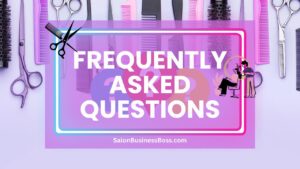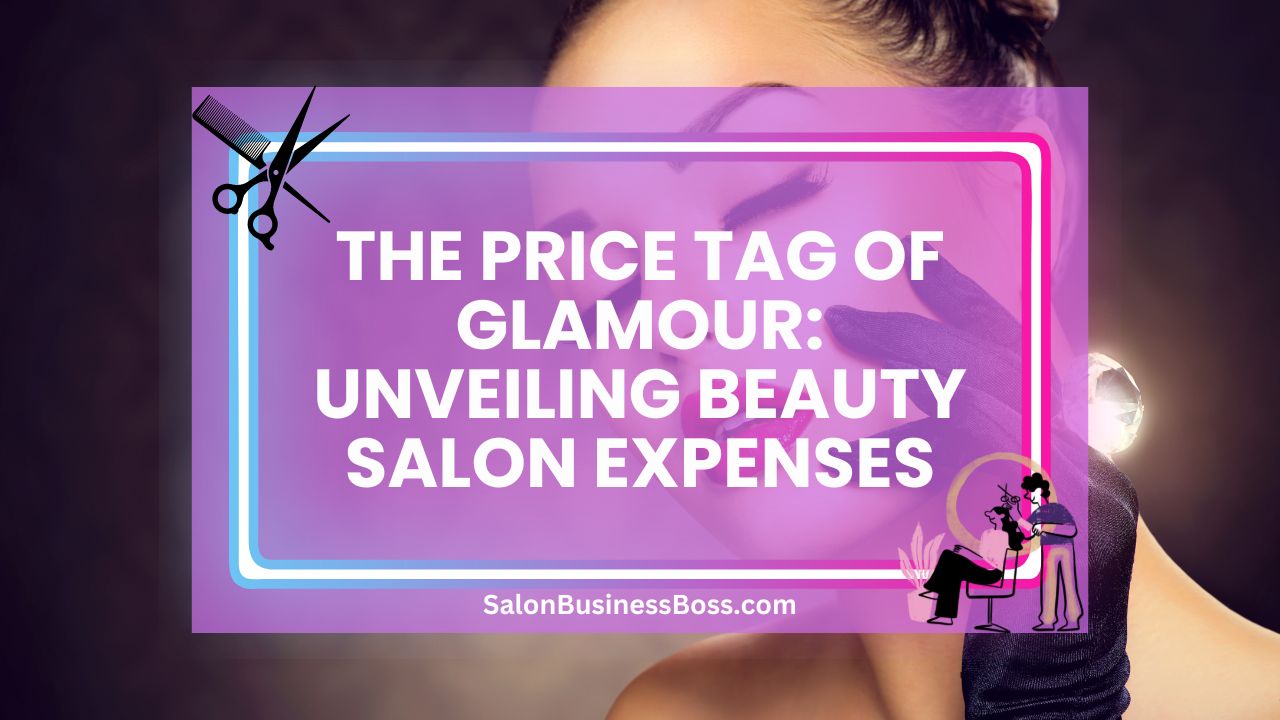Running a beauty salon involves juggling various expenses. Understanding the average costs is key for aspiring salon owners. Let’s break down the essentials.
The average cost to run a beauty salon varies widely, ranging from $20,000 to $200,000 annually. Factors include location, size, services offered, and operational expenses such as rent, utilities, supplies, and staffing.
I. Starting Your Beauty Journey: Navigating Initial Costs

Embarking on a beauty salon venture involves more than just styling hair and pampering clients—it requires a financial game plan. Let’s delve into the first steps of this exciting journey: the start-up costs.
Initial Investments
Setting up a beauty salon demands a careful selection of equipment and creating an ambiance that captivates customers. The initial investments cover essentials like salon chairs, styling tools, and quality products to ensure your clients leave satisfied and your business runs smoothly.
Licensing and Legal Requirements
Before you start snipping away or applying that perfect shade of polish, there’s the paperwork dance. Acquiring the necessary licenses and meeting legal requirements ensures you’re on the right side of the beauty business law. This step not only adds a layer of professionalism but also safeguards your salon against potential hiccups.
Think of it as laying the foundation for your beauty empire. The initial costs, which can vary but generally range from $20,000 to $100,000, might feel like a plunge, but they are your ticket to creating a welcoming space where clients feel both comfortable and beautified.
Remember, your start-up investments shape the soul of your salon. Choosing the right equipment and meeting legal standards may seem like a chore, but it’s the secret ingredient to a successful beauty venture.
When you’re picking out those stylish salon chairs or ensuring your paperwork is in order, you’re not just spending money—you’re investing in the future allure and legitimacy of your beauty haven.
Read more about: Glamour and Growth: The Role of a Hair Salon Marketing Consultant
II. Keeping the Lights On: Managing Day-to-Day Beauty Shop Costs
Once you’ve set the stage with your salon’s charming ambiance, it’s time to dive into the everyday nitty-gritty—operational expenses. These are the costs that keep the lights on and the hair dryers buzzing, ensuring your beauty haven stays afloat.
Rent and Utilities
Every square foot of your salon comes with a price tag. Rent is the heartbeat of your operational costs, influencing your budget like a steady rhythm. Alongside rent, there’s the unassuming hero: utilities. From electricity that powers those styling tools to water for shampooing, these expenses are the unsung heroes of salon functionality.
Staff Salaries and Benefits
Your talented stylists and support staff are the backbone of your salon, and compensating them fairly is paramount. Staff salaries and benefits make up a significant chunk of your operational budget. These hardworking individuals contribute to the welcoming atmosphere and ensure your clients leave with a smile, making every penny spent on their salaries a vital investment in your salon’s success.
Supplies and Product Inventory
From hair dyes to shampoo and conditioner, the supplies and products lining your shelves are more than just items; they’re the tools of your trade. Managing inventory means striking a balance—ensuring you have enough to meet demand without overstocking. This delicate dance of supply and demand affects your bottom line and the satisfaction of your clientele.
Operational expenses might not have the glamour of grand openings or the thrill of creative styling, but they’re the engine that powers your salon’s daily operations. Rent, staff compensation, and supplies are the everyday heroes that, when managed wisely, keep your beauty sanctuary humming along smoothly, providing both quality service and a comfortable environment for your clients.
III. Choosing Your Beauty Spot: Decoding Location for Your Salon
When it comes to setting up your beauty salon, location isn’t just about a dot on the map—it’s a crucial decision that shapes your salon’s journey. Let’s unravel the tale of urban versus suburban locations and how local competition plays a part in your beauty venture.
Urban vs. Suburban Costs
Picture this: the bustling streets of the city versus the quieter charm of the suburbs. Urban areas often come with a higher price tag for rent and other essentials. The city’s vibrant energy might attract a diverse clientele, but it comes at a cost. On the flip side, suburban spots are often more budget-friendly, offering a cozy setting that can be appealing in its own right. Deciding between urban and suburban isn’t just about geography; it’s about finding the right fit for your salon’s vibe and budget.
Impact of Local Competition
Every street corner tells a story of businesses vying for attention, and your salon is no exception. Local competition can either be a friendly neighbor or a fierce rival. Understanding the existing beauty landscape is key.
In an urban jungle, competition might be fierce, but it also means more potential clients. Suburban tranquility might mean less rivalry, but drawing in clients could require a different strategy. Your salon isn’t just a service; it’s an experience, and local competition shapes the narrative of that experience.
Choosing a location for your beauty haven is like picking the perfect outfit—it needs to suit your style, fit your budget, and make you stand out in the crowd. Whether it’s the lively city streets or the peaceful suburban lanes, understanding the costs and competition in your chosen location ensures your salon isn’t just a destination; it’s a community hub where clients feel at home and beautiful.
IV. Crafting Your Salon Menu: The Art of Offering Diverse Services

Your beauty salon isn’t just a place for haircuts and color—it’s an experience, a menu of services that caters to diverse client needs. Let’s explore the world of service offerings and the delicate dance between providing a range of options and ensuring your salon stays in tune with client desires.
Diverse Services Mean Varied Costs
Think of your salon menu as a palette of colors, each service adding a unique hue to your offerings. From haircuts and styling to facials and manicures, each service comes with its own set of costs. Hair treatments might require specific products, while skincare services demand specialized tools.
As you expand your menu, consider the equipment, products, and time each service entails. Offering a variety is like presenting a rich tapestry of options, but it also means navigating the costs associated with this colorful array.
Balancing Profitability and Client Demand
While it’s enticing to offer every beauty service under the sun, balance is the key to a harmonious salon. Understanding the delicate interplay between profitability and client demand is like finding the perfect melody.
Some services may be popular and financially rewarding, while others cater to niche preferences. Striking the right balance ensures your salon not only meets your financial goals but also resonates with the diverse tastes of your clientele.
Crafting your salon’s service offerings is an art, a careful selection of brushes and strokes that paint the canvas of your business. Embrace diversity, but do so with an eye on the practicalities. Your salon isn’t just about providing services; it’s about creating an atmosphere where clients feel the allure of choice and leave not just satisfied but delighted with the vibrant palette of experiences your salon offers.
Read more about: From Blueprint to Blowouts: Crunching Numbers on Your Hair Salon Building
Summary
Successfully managing a beauty salon involves a meticulous understanding of these costs, ensuring a thriving and sustainable business.
Frequently Asked Questions

Q: What are the typical start-up costs for opening a beauty salon?
A: Initial costs include equipment and interior setup, ranging from $20,000 to $100,000, along with licensing fees and legal requirements.
Q: How do location and competition impact beauty salon expenses?
A: Urban locations often have higher rent and competition, influencing operational costs. Suburban areas may offer a more affordable alternative for salon owners.
Q: What strategies can salon owners use to manage operational expenses effectively?
A: Focus on cost-effective supply management, efficient staff scheduling, and strategic service offerings to balance profitability and maintain a successful beauty salon.
To learn more on how to start you own salon checkout my startup documents here.
The information provided by SalonBusinessBoss.com (“The Site”) is for general informational purposes only. All information on the Site is provided in good faith, however, we make no representation or warranty of any kind, express or implied, regarding the accuracy, adequacy, validity, reliability, availability or completeness of any information on the Site. Under no circumstance shall we have any liability to you for any loss or damage of any kind incurred as a result of the use of the Site or Reliance on any information provided on the Site. Your use of the Site and your reliance on any information on the Site is solely at your own risk. This blog post is for educational purposes only and does not constitute legal advice. Please consult a legal expert to address your specific needs. Terms and Conditions. (https://salonbusinessboss.com/terms-conditions/)

About the author. Entrepreneur and Salon Business Fan.
Hi! I am Shawn and I am a happy individual who happens to be an entrepreneur. I have owned several types of businesses in my life from a coffee shop to an import and export business to an online review business plus a few more and now I create online salon business resources for those interested in starting new ventures. It’s demanding work but I love it. I do it for those passionate about their business and their goals. That’s why when I meet a salon business owner, I see myself. I know how hard the struggle is to retain clients, find good employees and keep the business growing all while trying to stay competitive.
That’s why I created Salon Business Boss: I want to help salon business owners like you build a thriving business that brings you endless joy and supports your ideal lifestyle.

